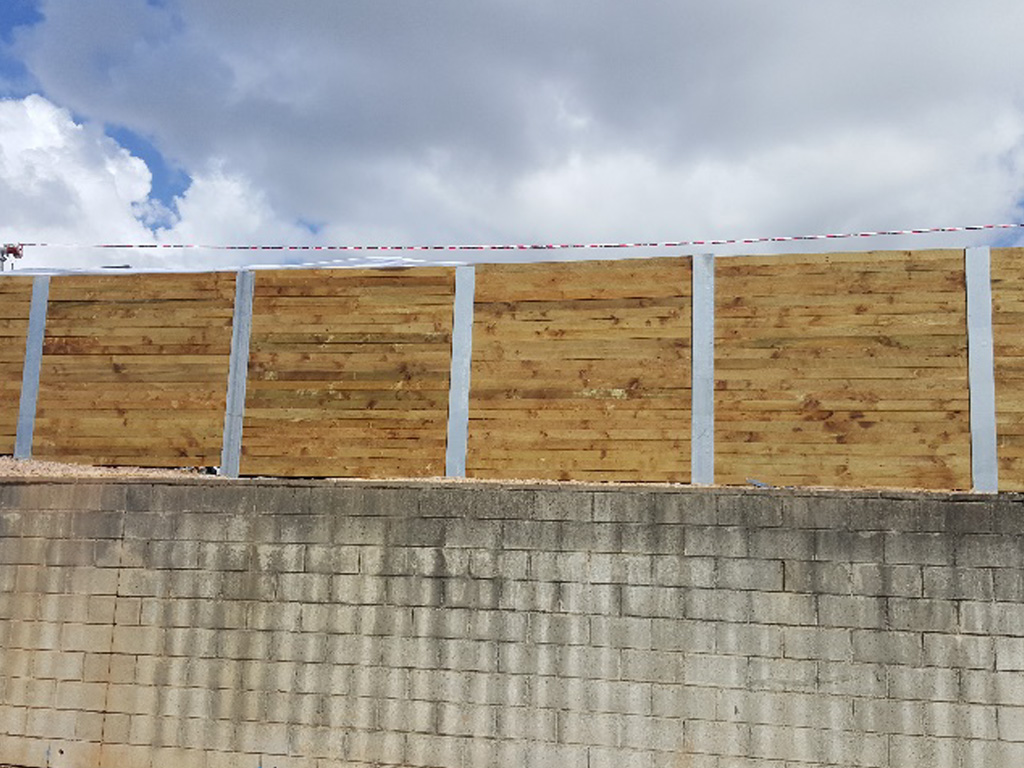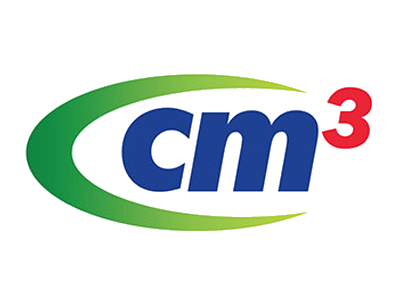Slope Collapse and Retaining Wall Installation
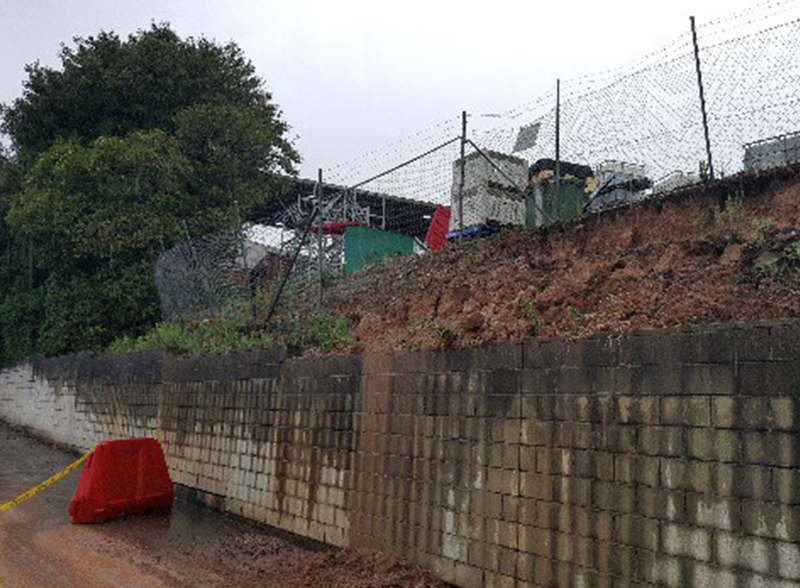
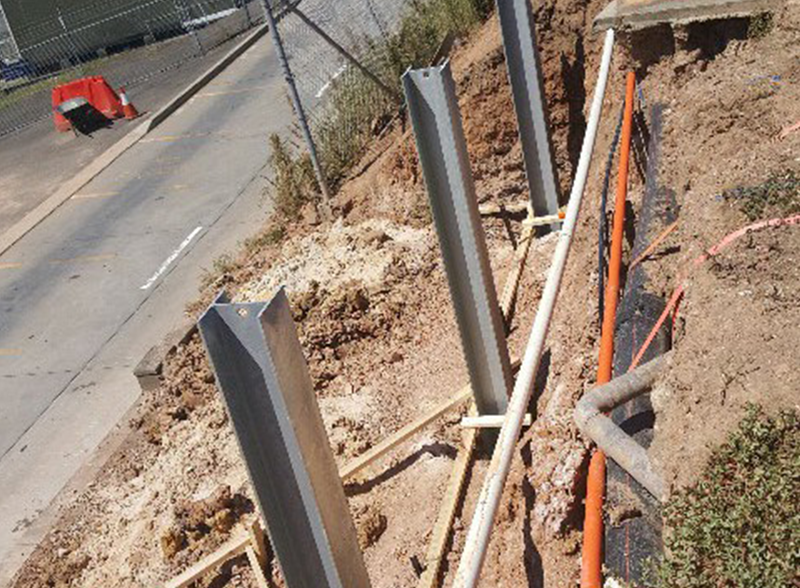
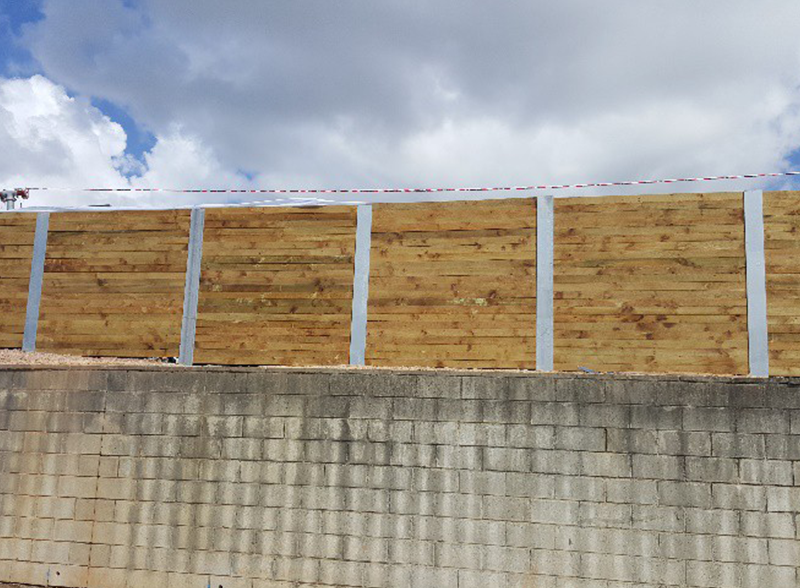
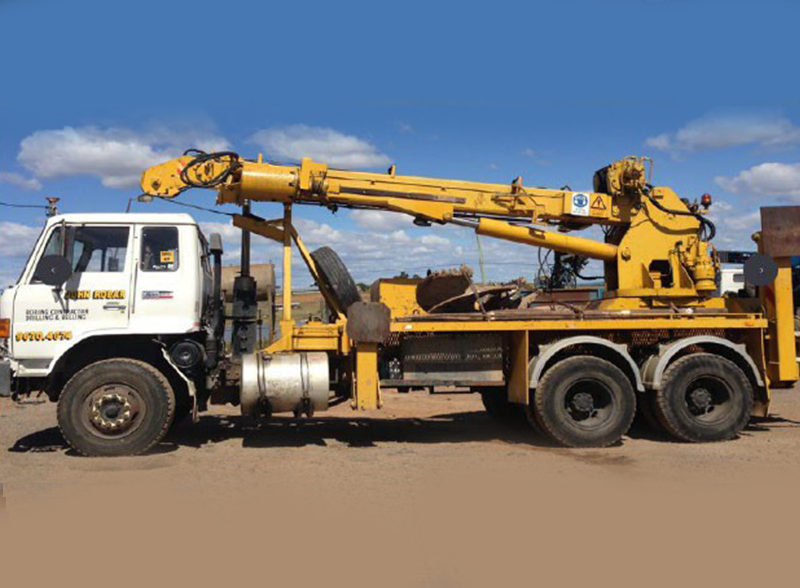
This slope collapse occurred at an operational bus depot at the Sydney suburb of Ryde. The slope collapse occurred due to heavy and consist rainfall in the preceding days. Also, the slope had minimal vegetation cover. We were advised several years earlier; the slope was rich in trees, but they were removed. The collapse of the slope also exposed utilities in the area. This included electrical, communications, and a fire hydrant. The utilities were strapped to Deadman anchors to avoid collapse of the conduits as they were suspended in the air, till the new retaining wall could be constructed. The slope itself was stablished by utilising one tonne sandbags, and geotextile fabric.
To expedite the design, both standard universal columns and treated pine sleepers were chosen, and their availability confirmed with suppliers. The columns themselves were utilised in the piles, rather than having reinforcement and a rag bolt assembly to attach the columns to. This simplified the construction process. Whilst we had existing bore log details and geotechnical information for the area, we also ensured a geotechnical engineer was available on site ensuring the piles socked into rock.
To bore the piles, a non-standard auger was utilised. This auger was a mobile unit which is attached to a truck. It is versatile for hard to reach applications. The piles don’t have to be drilled from the surface finish level. They can be drilled from either below or above the finished surface. Whilst a long reach excavator was considered, it was ruled out due to access issues. Please refer above for photos.







